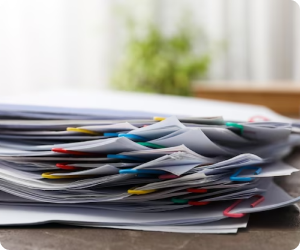Demystifying organisational documents: The fantastic four and beyond
When it comes to the world of organisational documentation, there are four indispensable players, each with a unique role to play:

Standard Operating Procedures
Let's start with Standard Operating Procedures (SOPs). Just as the name suggests, they are all about keeping things standardised and straightforward. SOPs break down tasks or operations into simple, sequential steps that can be readily followed. Think of an SOP like a recipe for baking a cake – easy to follow, always in the active voice and often linked to training programs and competency assessments.
In a nutshell, SOPs are your trusty, numbered guides to conquer specific tasks with ease.

Procedures
Now, let's shift our focus to Procedures. These documents operate on a slightly higher level of abstraction compared with SOPs. While they may include numbered tasks, their main gig is explaining how to put a policy into action. Procedures are like the bridge between high-level policy statements and the nitty-gritty details found in SOPs. For example, if the policy states, ‘All office employees must present identification’, procedures swoop in to explain how to obtain IDs, display them, handle lost passes and tackle unauthorised office entry (that sneaky 'tailgating' move).
Procedures are your go-to manuals for translating policies into action, minus the overwhelming details.

Policy documents
Now, let's talk about Policy documents. They're the big-picture thinkers, grounded in legislative, regulatory and compliance rules. They don't dive into the 'how' or 'why'; instead, they declare 'what' needs to be done, often in a high-level language. Policies can sometimes sound a bit cryptic, especially if they're rooted in legislation, but compliance-based policies tend to be much more user friendly.
Policies set the rules and expectations in broad strokes, leaving the specifics to SOPs and Procedures.

Training documentation
Last but not least, we have Training documentation. These documents are like the dynamic duo of Procedures and SOPs. They're often created by a team that examines procedures, evaluates the audience's baseline knowledge, and figures out what needs detailed explanation and what can be simplified. And when competency tests or evaluations are in the picture, training material must be a perfect match with the procedures and SOPs.
Training documentation ensures everyone's on the same page, working together like a well-oiled machine.
So there you have it – the fantastic four of organisational documentation, each playing a unique role in keeping things running smoothly and efficiently!

Promotional and web-based content
Of course, some technical writing falls outside these four groups and can be broadly described as ‘content’. While content is typically used in the context of website content, it can be anything that your organisation needs to say or communicate to a particular audience, whether the audience is internal or external. Discovery Media’s writers have decades of experience in content development across just about every topic – business, technical and cultural – you can imagine. Give us the brief and we’ll craft the content!
Share this article: Email now

